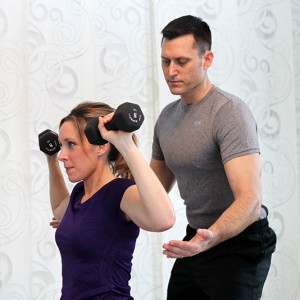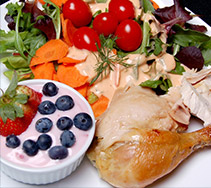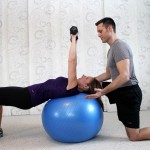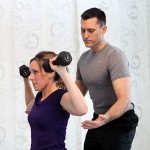General Tips for Fitness and Nutrition
- Always warm-up a minimum of 10 minutes before any exercise, sports, or stretching. A warm-up can include activities such as walking, riding a bike, jumping jacks, elliptical machine, etc.
- Perform all weight training with slow and controlled movements; do not let the weight control you, you should control the weight.
- If your form is poor, then the weight might be too heavy. Injuries may occur from lack of good form.
- Always breath out on exertion when lifting weights.
- Stretch the muscle groups you are training after you have finished your weight training routine.
- The only way to burn body fat stores is through cardiovascular (aerobic) exercise and proper nutrition. There is no such thing as “spot reduction”. Cardiovascular exercise includes walking, biking, running, swimming, in-line skating, and many more.
- The longer duration you go with aerobic exercise, then the more calories and body fat stores you can burn.
- The higher the intensity or heart rate during aerobic exercise, then the stronger the heart will become in pumping oxygenated blood throughout your body with less beats per minute.
- A variety of exercises, aerobic and strength-training, helps the body to become a more efficient calorie-burning machine. Try to mix up your cardio workouts by riding a bike one day, jog another day, and swim yet another day.
- Know how many calories your body requires in a given day. Use our BMR calculator by clicking on Caloric Intake.
- In order to keep your metabolism running high, you must eat. Breakfast is very important in getting your metabolism going first thing in the morning. The rest of the day should consist of 4-5 small meals about every 3 hours throughout the day. Try to avoid eating two or three large meals in one day. Your body will metabolize smaller meals quicker and more efficiently than large meals.
- Increase your intake of vegetables and high fiber carbohydrates. Decrease intake of sugary, processed foods. Vegetables are also very high in vitamins, minerals, and dietary fiber.
- Drink at least 8-12 8oz. glasses of water every day. Water will keep you well hydrated for your workouts and will also make you feel more full and less tempted to eat.
- If you are burning off more calories than what you are consuming in a day, then there should be weight loss taking place.
- Be patient with your training and with the loss of body fat. It takes time to get the body you want. Motivation and consistency are key elements in achieving your goals.







